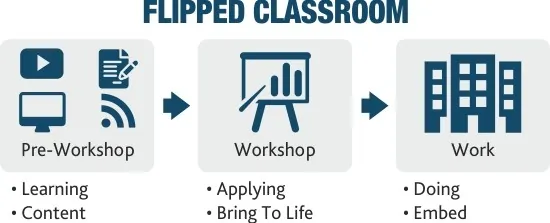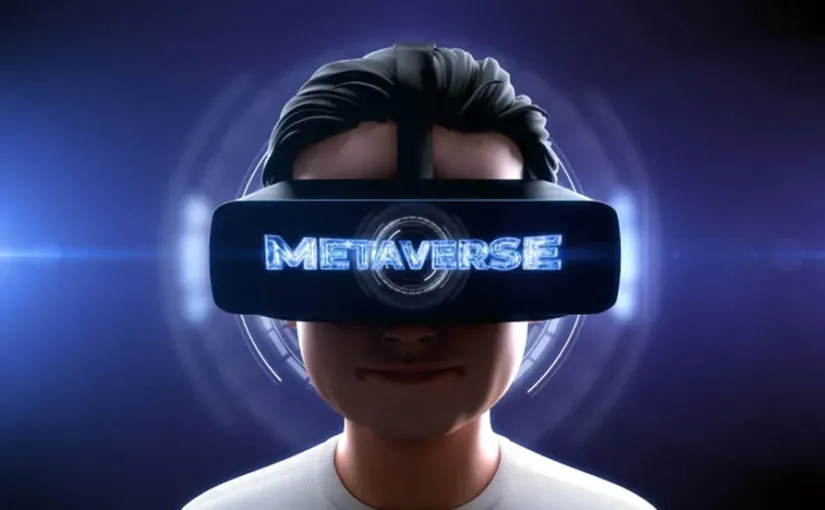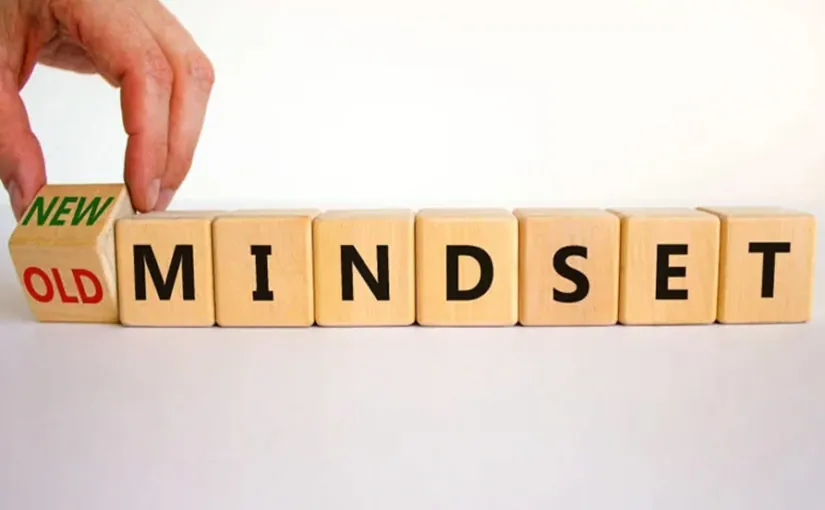Think about traditional learning for a moment…
You normally attend a course or a learning event and then the trainer/teacher covers the content within the classroom or workshop environment.

The trainer is the focus point throughout the day disseminating the learning, exercises, case studies and setting up discussions.
The classroom is therefore the place where the learning and the content is covered and it’s all facilitated through the trainer.
A flipped classroom is the opposite.

Flipped learning is an approach and type of blended learning where delegates and students learn content, techniques and strategies BEFORE they attend the classroom based session.
Then, within the classroom the trainer focuses on the application of the learning rather than learning the content from scratch.
The focus becomes on how to use the content rather than learning it.
So there’s a completely different shift in the perspective of what the classroom session is all about.
What forms can the content take?
You name it!
Videos, bespoke elearning solutions webinars, virtual training, audio, ebooks, blogs, articles, microlearning, digital research, online forums, online discussions and any other type of elearning content that you can think of!
As an eLearning company, Skillshub is committed to creating efficient and impactful learning experiences. Contact us to find out more.
The flipped design of learning shifts the emphasis away from the trainer and onto the delegate to own their learning. It is a learner-centered model.
It allows the classroom part of the learning to be focused on embedding the learning and making it real.
It answers the question:
“How will I apply this at work?”
This can be achieved through action learning sets and other games, exercises and approaches to use what has been learned already and to plan and practice making it a reality.
So it enables a different approach within the classroom, which also requires a different set of skills for the trainer as well.
There’s no more death by powerpoint or “turn to page 8 of your workbook” and have a read about Maslows Hierarchy of needs for the next 10 minutes!
Instead, there is a shift away from “learning” anything new within the classroom and more of a move towards problem solving, thinking, collaboration, simulations and planning.
Want to try the flipped classroom approach?
Here’s a quick 5 step approach:
- Write down the key objectives for the learning
- Write down the essential content topics that your delegates need to learn/cover/prepare
- Find resources to cover #2 above or provide the topics and allow your delegates to find the information themselves
- Think about how you are going to bring the learning to life in the classrooma) Activities
b) Problem solving
c) Thinking
d) Case studies
e) Application - How will you know if the learning event has been a success?
A flipped classroom provides a new learning experience for your people.
If delegates know that they are going to use the content within the session then they are more likely to review it and actually work through it beforehand.
There’s nothing worse than being the only one in a workshop of 10 who has not completed their homework.
So the threat of peer pressure plays a role too.
Thanks again, give it a go!













